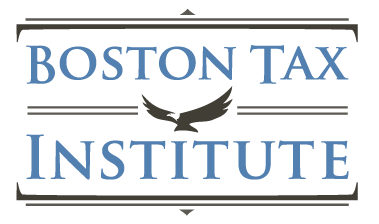Ted Eytan – Creative Commons
According to the National Law Center on Homelessness & Poverty, there is no clear rule to the effect that living in the land of the free and the home of the brave gives one a right to housing. Nonetheless, the Federal Government has supported affordable housing, in one way or another since the Great Depression. I haven’t found anything more up to date, but a study from 2014 indicates that only one fourth of the families that qualify for housing assistance receive it.
For about thirty years the primary federal support has been from a tax provision – Section 42, the Low Income Housing Tax Credit – LIHTC(pronounced Lye-tech by those in the know). It currently runs about nine billion per year. And we are now hearing concerns that this program which should be creating a common good is enriching private interests.
The Year 30 Problem
In 2016 Harvard Law & Policy Review published Residual Value Capture in Subsidized Housing by Brandon M. Weiss, Associate Professor of Law at the American University Washington College of Law. Professor Weiss predicted that beginning in 2020 the government will forfeit billions of dollars in investment and that tens of thousands of households will be displaced. Professor Weiss assesses this as a result of the inherent dynamic of public-private partnerships. Private interests capture more of the residual value than was necessary to incentivize them to participate. As Professor Weiss sees it the ability to convert units to market rate at the end of thirty years amounts to a massive windfall to private developers.
The cure he recommends is not-for-profit developers committed to providing affordable housing. Not-for-profit developers are common in the field and Professor Weiss indicates that they have provided better results in many cases.
On a variety of other measures, there is evidence that the kind of housing nonprofit developers produce is different than that produced by for-profit developers in ways that yield additional public value. For example, there is evidence that nonprofit sponsors are more likely to locate their housing in difficult to develop areas, and “in keeping with the mission of many nonprofits to house large families, these groups were more likely than for-profit developers to build units larger than 1,000 square feet.” Others have argued even more broadly that nonprofits take a more holistic approach to housing that results in a number of positive neighborhood spillover effects including community empowerment and in particular that community development corporations are more closely connected, and therefore responsive, to the needs of the community.
Not-for-profit developers were part of the mix from inception and if they remain true to their mission, they will mitigate to an extent the Year 30 problem that we are now facing.
The Year 15 Problem
As it turns out though, the not-for-profits are facing a Year 15 problem. The Year 30 problem i.e. the threat to the affordability of projects created in the nineties comes from for-profit developers and it is inherent in the way Section 42 was designed, Not-for-profit developers, on the other hand, are facing a Year 15 problem and it comes from investors who are seeking returns that were not anticipated.
Understanding the Year 15 problem requires a brief explanation of how the credit works. The owner of the building receives a credit annually on the “qualified basis” of the building which reflects the portion of the building that is providing low-income units for 10 years.
The credit is currently pegged at 9% per year for projects with unsubsidized mortgages and 4% for projects with subsidized mortgages. Originally the credit was reset every month to assure that it would provide either 70% of the present value of the investment or 30% in the case of subsidized projects.
After the 10 years is up, the credit is subject to partial recapture for 5 years which makes for a 15 year “compliance period”. There remains a requirement to keep the project affordable for another fifteen years, but that is enforced by state housing authorities. The IRS is out of the picture.
In year 15 the project might be needing a makeover. And there is a provision in Section 42 that can allow a not-for-profit to take out an investor at a bargain price relative to the fair market value. Until relatively recently it was uncontroversial, but now there is a significant amount of litigation between limited partners, often not the original limited partners, and not-for-profit sponsors. The limited partners are resisting not-for-profits exercising a “right of first refusal” (ROFR) that is defined in Section 42. I have dug into the litigation a bit and you can read about it here, here, and here.
Industry Response
Ellen Hoffman of the National Housing Trust provided me with a statement on the phenomenon.
I am extremely troubled by the rapidly unfolding phenomena in which major sources of outside capital have begun buying up control of Housing Credit investor limited partnerships with the aim to extract resources out of affordable housing properties after the end of the initial 15-year Compliance Period. This has caught many advocates, stakeholders, and policymakers unaware, but will have a profound impact on affordable housing in this country.
Alison Wadle, General Counsel of Alden Torch, one of those sources of outside capital, gave me a different perspective in this piece.
As part of its fiduciary duties to those investors, its obligations to the federal low-income housing tax credit program, as well as its long-term commitment to low-income housing, Alden Torch has a responsibility to ensure that the contractual obligations and entitlements of the parties are upheld and the requirements of the federal program are met.
From the latter view, you would get the impression that a potential big backend payday was always contemplated. I thought it would be useful to talk to someone who is active in the industry.
What Did You Want To Do When You Grew Up?
Catalina “Cat” Vielma decided that she wanted to work in LIHTC when she was in high school. She attributes some of it to idealism imparted in her high school – St Ignatius College Prep in Chicago. I guess they bought into Father Pedro Arrupe’s vision of Jesuit high schools turning out “men and women for others“. She was concerned about the demolition of the ABLA Homes as part of the CHA plan for transformation. In developing this rather unusual interest it helped that her father was an economist for the state government and her mother an urban planner.
She is currently Senior Vice President – Acquisitions at RedStone Equity Partners. Her position has her balancing the needs of developers and investors in LIHTC deals. What I learned from her is that the LIHTC market is much less chaotic then it was in nineties when I was working in the field doing audits and tax compliance for Joseph B Cohan and Associates.
In the current market the investors are pretty much all banks which get Community Reinvestment Act brownie points. The credits go for about 95 cents on the dollar. A syndicator’s margin of 2 cents makes for 93 cents to the developer. There is also a benefit from tax losses over the 15 years giving the investor a return between 4% and 7%. In the underwriting there is no consideration of any back end return other than being made whole on any potential tax liability. The syndicator also provides asset management services during the 15 year compliance period.
Ms. Vielma is personally supportive of legislation which would clarify the definition of “right of first refusal” in a manner favorable to not-for-profit developers.
More From Professor Weiss
Having gotten his thoughts on the Year 30 problem by reading his article, I thought it would be worth asking Professor Weiss for his view on the Year 15 problem. Here is what he shared with me:
The trend of limited partner investors attempting to thwart the ability of nonprofit general partners from exercising their statutorily defined rights of first refusal in low-income housing tax credit (LIHTC) deals is extremely troubling. Such efforts are regularly contrary to law yet costly for nonprofits to litigate, frustrate congressional intent, violate long-held norms and expectations in the industry, and threaten to jeopardize the ongoing affordability of our already scarce federally-assisted housing stock. Nevertheless, investors see an opportunity for windfall profits and are pouncing.
The fact that these efforts are increasingly being made by aggregators that purchase LIHTC partnership interests for the sole purpose of either pressuring nonprofits to buy them out at exorbitant prices, or with the hopes of eliminating affordability restrictions and raising rents to market levels, is all the more reason for alarm. The Biden Administration and Congress should work together swiftly to clarify this issue in Section 42 of the tax code. State housing finance agencies should amend their qualified allocation plans to ensure credits flow only to projects that will honor nonprofit purchase rights. In the meantime, courts should interpret statutory rights of first refusal consistent with congressional intent to ensure that this valuable segment of our affordable housing stock remains in the hands of mission-driven stewards.
Conclusion
It seems that the Low Income Housing Tax Credit will continue as the major federal support for affordable housing. Democrats generally like affordable housing, sort of. And Republicans seem to like tax credits for corporations unreservedly. It has a certain Rube Goldberg complexity to it. And of course that creates another constituency since it is a sort of white collar jobs program (See Reilly’s Third Law of Tax Practice).
When I started looking into this controversy, I resolved to try to be objective rather than to root for my home team which is the not-for-profit sponsors. The other side, however, does not speak out quite as much. There is a bit of discussion on the Novogradac website expressing concerns about the legislative fix. Jeffrey Harris had something on the Federalist Society, that was quite critical of the proposal. As it happens though, investors supposedly seeking windfalls are overall winning in federal court, so the court of public opinion might not be as important to them.
Originally published on Forbes.com.
For great value continuing professional education. I recommend the Boston Tax Institute

You can register on-line or reach them by phone (561) 268 – 2269 or email vc@bostontaxinstitute.com. Mention Your Tax Matters Partner if you contact them.































































































